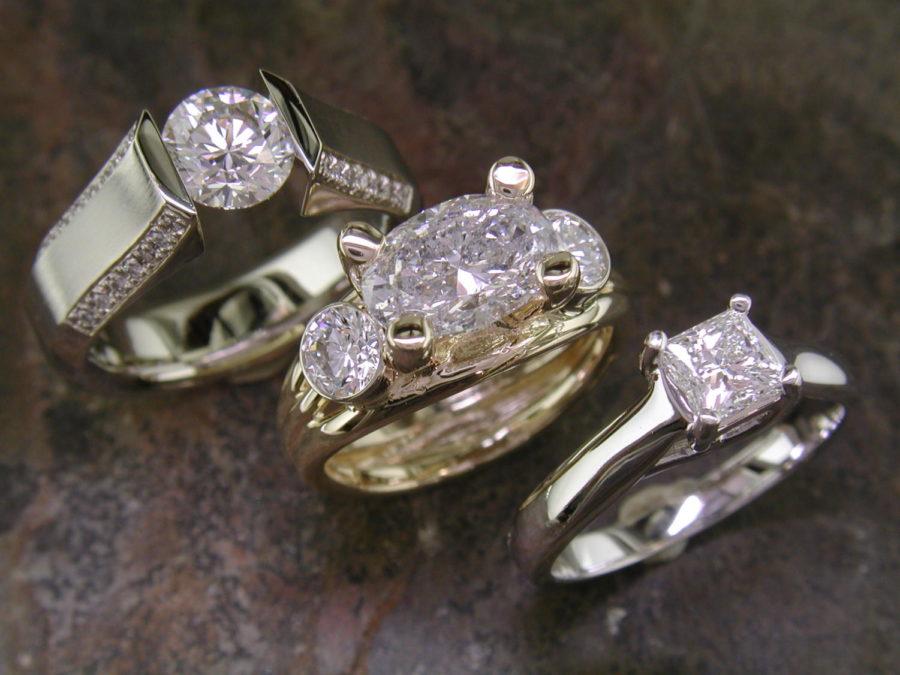Choosing the right metal
Typical wedding ring metal types are 14K white, top left, 14K yellow, and platinum. The newer 14K white gold and platinum are indiscernible to naked eye. Courtesy photo: Kyle Youngberg, Ames Silversmithing
December 3, 2010
When thinking of the perfect wedding ring, most automatically imagine a white-gold band, but there are so many other metals to choose from that are good to keep in mind.
According to Amber Hoyt, an employee at Helzberg Diamonds for three years, white gold is most popular right now.
“White gold gives a cleaner look,” Hoyt said, “which is why it’s so popular.”
White gold may look pretty, but it does require some work to keep it looking that way.
“The one downfall to white gold is that it is naturally yellow in color, so it tends to turn a bit of a yellowish-buttery color after being worn for a while,” Hoyt said.
You can make white gold fresh again by having it rhodium plated. Naturally, rhodium is a white metal, so jewelers use it to make the gold white.
The one advantage of yellow gold is it requires less maintenance.
“Yellow gold is in its natural state of being,” Hoyt said. “It needs no real care and should just be cleaned whenever you feel like it.”
If yellow gold is not for you, there are other options. Titanium still has that white color, but is a little darker.
Titanium rings are very popular because there is such an abundance of this metal on earth, which makes it inexpensive.
“A downfall is that it isn’t as durable as other metals, but many people don’t mind since it’s cheaper,” Hoyt said.
Titanium tends to scratch more, but sometimes it’s hard to get men to wear rings. Therefore, titanium may be a cheaper and more reasonable option.
If you’re looking for a unique ring and don’t mind breaking the bank, platinum may be your metal.
According to Hoyt, platinum is really rare. All the platinum mined in the entire world can fit in an average-sized living room, which is why it’s so expensive.
Platinum’s advantage is its durability. It’s very hard to scratch, and because of this, it’s a very low-maintenance ring.
“It is the strongest naturally white metal there is,” Hoyt said.
Believe it or not, there are many more metal options for rings. In high school, I had a chemistry teacher whose ring was made out of his favorite element.
Many people don’t even recognize this as an option, but steering away from the mainstream metals is definitely possible as well. Hoyt said to order non-traditional rings, the best option is searching on the Internet.
After you’ve chosen the band, there are many other decisions to be made. Diamonds come in almost every color and shape, so how do you choose?
Hoyt’s best advice is to “know your Four C’s: carat, clarity, color and cut.”
She also recommends that you look at the ring under a gemscope if you’re spending a lot of money on it.
When you’ve done these things, you can be pretty confident with your choice. After that, it is important to check the warranties and guarantees.
“Although it may look perfect when buying it, later on down the road there is a high chance something will go wrong,” Hoyt said. “Which is why you want a warranty to help reassure you everything will be OK.”
Lastly, it is important to not let your friends deter you from a yellow-gold band if that’s what you want. Remember, this ring is supposed to be on your finger for the rest of your life.
Hoyt’s last bit of advice is simple: “Shop and look for what you love.”







